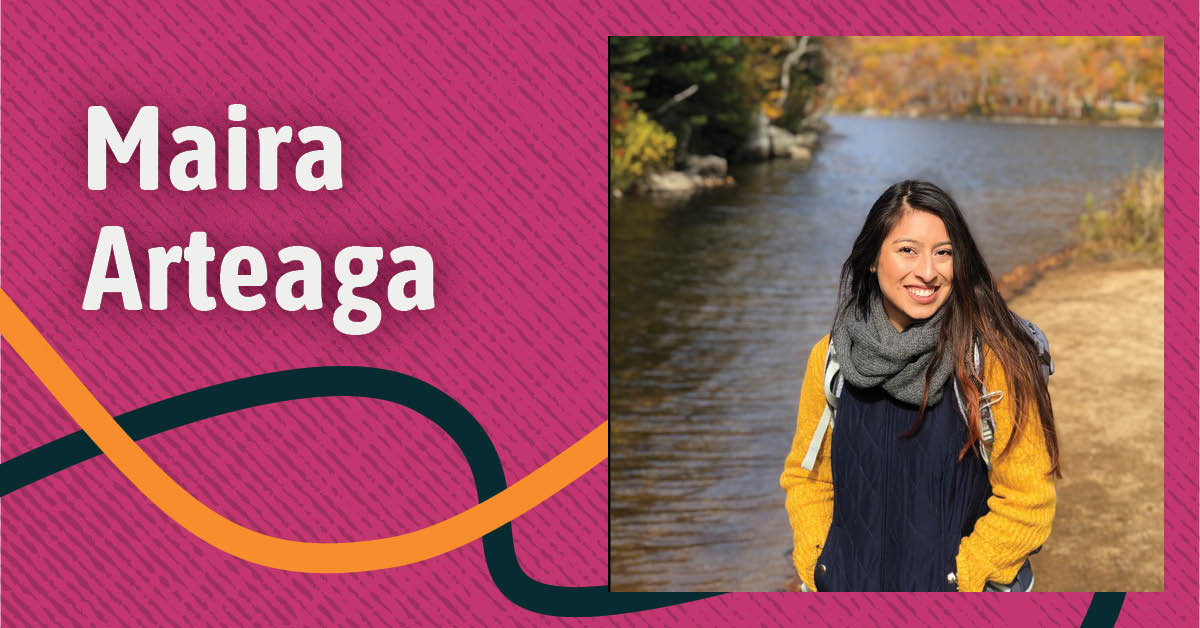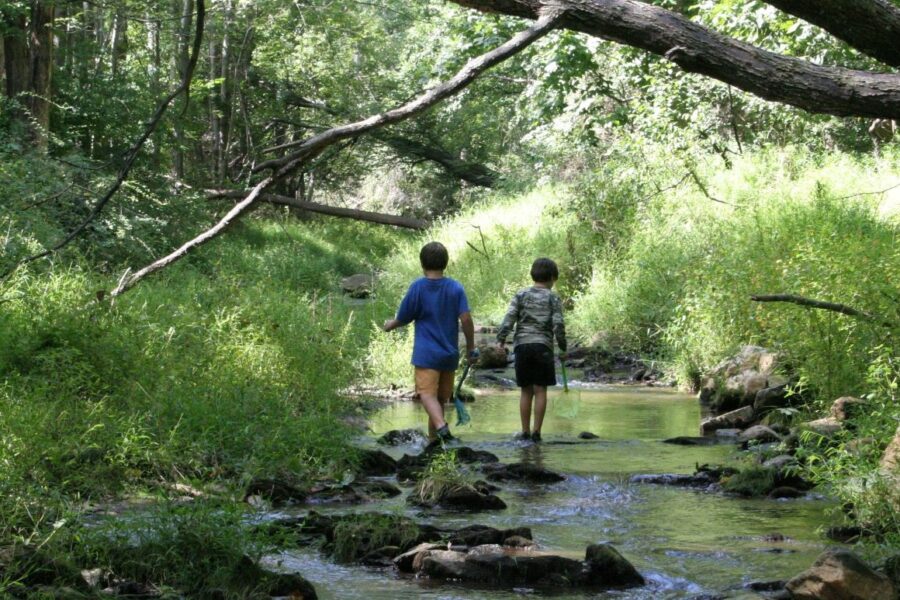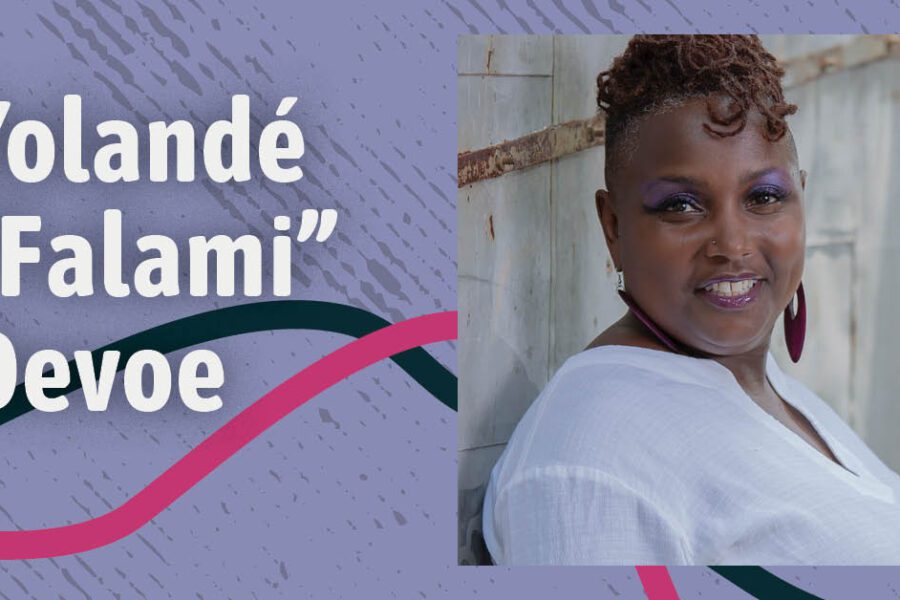“What will we be doing for outdoor inquiry?” is usually the first question of the day Maira Arteaga’s young students ask during their daily morning meeting. She loves their curiosity—and how excited they are about the learning environment provided by nature that they visit every day.
Arteaga, a graduate of Antioch New England’s hybrid Integrated Learning / Early Childhood Education program (she was in its first cohort), is currently a long-term substitute teacher in a first-grade class at Guilford Central School in Vermont. She has been hired for the upcoming 2021-2022 school year as the school’s new kindergarten teacher. She proved her value to the school during the past year when her focus on and expertise around outdoor- and place-based learning served her and her students and colleagues as the pandemic propelled many classrooms out of doors.
“Being outdoors really takes all of the anxiety about the pandemic of the mind for a while,” says Arteaga. But, she adds, “more than that it pushes us to bring the academics outdoors in creative and fun ways, adding to the discoveries and natural wonders of every season and connecting it to stories we’ve read.” This last year, she has combined the urgency of the pandemic with her abiding love of teaching outdoors to offer her students powerful and new learning experiences. But before the year outside could commence, they first had to establish a space to gather.
Evolution of an Outdoor Classroom
“Our outdoor space began as an empty, open wooded area that rests partially on town property,” explains Arteaga. “I started off with a rudimentary tarp to provide shelter and lashed together multiple logs in an appropriate area where kids could use the ‘bathroom.’ The kids had fun collecting and laying branches and sticks against the lashed logs to create a privacy wall.” This was the initial phase of the outdoor classroom, and during this time the space was bare and Arteaga primarily played group games and had free exploration time with her students. Each student chooses a sit spot, which they then marked with a ‘tree cookie’ that they’d written their names on.
Soon, though, the classroom became a bit more formal. “After a couple of weeks our head custodian cut some logs into stumps, which we set up in a circle in a clearing in the woods,” explains Arteaga. She spent many weekends working with her fiancé to build upon the space. As she says, “We have since built, from scrap wood and logs, a large table around which we can all gather. We’ve strung up a bigger tarp to provide shelter for that gathering space. We also built a large fire pit before the winter months.”
This fire pit was popular with students. It was constructed of four logs that created a boundary or a safety “circle,” and then behind these, she built four benches to accommodate her eight students. When, later, her class grew to ten, and soon after that to fourteen, she expanded the circle. This was necessary due to the pandemic’s need for social distancing. They expanded the circle and added two smaller benches around the fire pit.
“After that, we built a mud kitchen from scrap wood and a smaller table along with it,” says Arteaga. This was a big hit. As she says, “That mud kitchen has offered so much creative play and is a busy place every day!” And the classroom has continued evolving, always becoming a bit more formal and easier to study in. They’ve lashed a log to two trees in order to accommodate a blackboard. And most recently, Arteaga added a weather station where she and her students have been collecting data for the last three weeks.
“The work is never done,” she says, “and I plan to do much more in the years to come!” She’s thankful for all of the help that she’s received in this big project. Much of the scrap wood came from lumber that was used by parent volunteers over the summer to build pavilions for outdoor classrooms. And local lumber yards also donated scrap wood. It’s been a community effort and one that her students got to be intimately involved in. In many ways, this is the culmination of a dream that Arteaga has had for many years.
Finding Inspiration in a Documentary
Arteaga first learned about outdoor learning when she viewed the documentary film School’s Out: Lessons from a Forest Kindergarten, which follows students at a public school in Langnau, Switzerland through three seasons as they venture out into the woods each day for their lessons. As the time she was enrolled in an early childhood education program at a community college. The film inspired an “aha” moment for Arteaga. The outdoor classroom exemplified a teaching and learning style that inspired her and made her excited. So she decided to pursue that dream—even if, as she thought at the time, it might mean she would eventually have to open her own school.
Forest kindergartens emerged in Sweden in the 1980s, and similar examples of nature and place-based education in elementary education can be found throughout the globe. But in the larger scheme of things they’re still uncommon. In the U.S., many people wanting to teach in forest preschools have had to do their own research and open their own private preschools.
One example of how integrated learning differs from conventional learning in the United States is that it approaches play as a learning activity—or, to say the same thing oppositely—it approaches learning as play. Play, storytelling, and movement are essential components of a nature- and place-based curriculum, which draws heavily on the Waldorf method of teaching. Students are led to engage in play and movement that naturally crosses the midline of the body, engaging both the right and left hemispheres of the brain. According to the theories behind it, this is important for both neural processing and healthful synaptic formation in the brain.
During Arteaga’s research into graduate programs in education, she stumbled upon a forest kinder blog created by Eliza Minucci, an alum of AUNE. When she reached out to Minucci, explains Arteaga, “She told me about Antioch and shared a little about her own story.” Arteaga became interested in Antioch’s programs and eventually decided to pursue its Certificate in Nature-Based Early Childhood Education. She was clear about what she wanted: “a master’s program in education that fit my own pedagogical beliefs and values.” At Antioch, she found it.
A World In Need of Outdoor Learning
She graduated into a time when there are not just openings for educators who are willing to pay more attention to the academic and social benefits of outdoor learning but there is a strong need for this kind of instruction.
How has the educational landscape changed over the past eighteen months? Says Arteaga, “I think that the silver lining of this pandemic has been that our schools have started to embrace the idea of teaching and learning outdoors.” This is not very precedented but has been a delightful development for her. “Having the support of administration and peers and students has been incredible,” she says. “My desire and passion for bringing my students outdoors is embraced, encouraged, and supported.”
This is not as new for the Guilford Central School, however. Over the last six years, it has maintained a strong outdoor-focused Pre-K program. Now that she will be a full-time kindergarten teacher there, one of Arteaga’s goals is to build and expand on that success, growing the play-based outdoor learning program along with the students into the next grade level.
The positive effects of this sort of study are remarkable. “Students are more focused outdoors,” explains Arteaga, “despite the openness and natural distractions.” To some degree, it all seems to contribute to our learning. She says that she and her students have “been transformed by holistic learning experiences that help student’s social-emotional health. It gives children agency in their learning, and the importance of play is ever so evident.”
As a kindergarten teacher, she envisions eventually spending 60-70% of the time outdoors with her students. She feels that the emerging focus on the benefits of outdoor learning has helped her specific skill-set as well as her mission to be recognized and appreciated. “Sharing ideas and resources that I’ve gained from Antioch has really helped me to be seen in my career by both colleagues and administrators,” she says.
Championing Outdoor Education
Arteaga sees the place-based, nature-focused teaching field growing quickly—blossoming, if you will. The realization that it’s not only possible but wonderful to get kids learning outside as a component of the regular school day appears to be a growing interest among both newer and veteran educators. Parents, guardians, kids, administrators, and teachers are all recognizing that students are happier and healthier when they spend time outdoors. And this is true all the time, not just during a pandemic. And they’re realizing that it’s worth the logistical effort and pedagogical adjustment to make it happen.
“These methodologies make all the difference in transforming a subject that is all-too-often taught through tedious and rote memorization into one that is physical, fun, and personal,” Arteaga says. She likes creating math stories and scenarios that incorporate students and their daily routines. Math is more interesting and even entertaining when it references students and their fellow classmates. And overall, a more playful and grounded style of teaching is working extremely well for Arteaga.
That’s why she is championing the cause—a task that may involve gathering and evaluating research data in the near future. She is collaborating with a fellow Antioch alum, Emma Hallowell, and as she explains they “are talking about pitching the idea to our district and drafting a pilot program to collect data.” They would be asking two foundational questions upon which the program will be developed: What are the true social, emotional, mental, and academic benefits of spending more time outdoors? And, How can we wisely and equitably transfer and adapt the standards that we are teaching indoors to an outdoor space?”
The answers to these questions are likely to prove not only constructive but fun. As learning should be.





